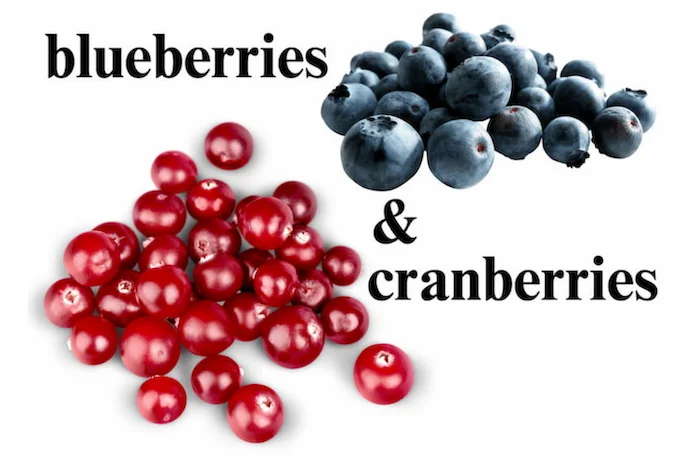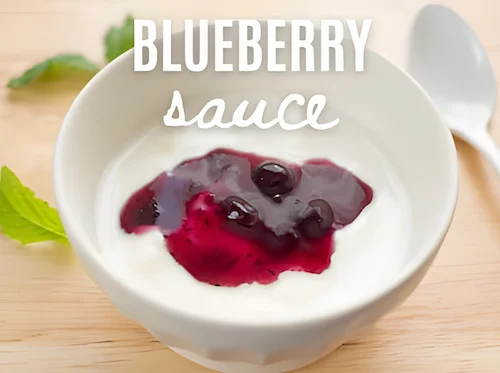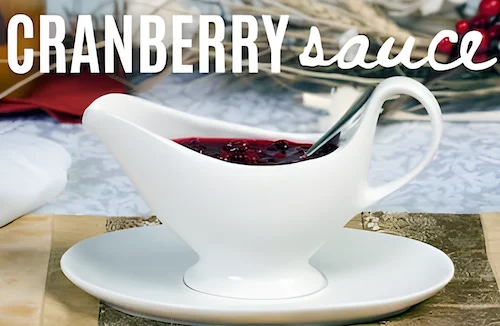What We Mean by “Dehydrate”
Here at Easy Food Dehydrating, “dehydrate” always means using an electric food dehydrator — the easy, reliable way to dry food at home.
- Home
- Dehydrating Fruits: Step-by-Step Guides by Type
- How to Dehydrate Blueberries and Cranberries
How to Dehydrate Berries:
Blueberries and Cranberries the Easy Way

Dehydrating berries at home is an easy way to enjoy their sweet-tart flavor year-round without worrying about spoilage. Whether you’ve picked blueberries and cranberries fresh from the garden or grabbed a frozen bag from the store, learn how to quickly turn them into shelf-stable snacks and recipe boosters with just a dehydrator.
✅ Quick Answer: How do you dehydrate berries at home?
To dehydrate berries, rinse and prep them, blanch briefly (or skip this if using frozen), then dry in a food dehydrator at 125°F–135°F for 10–18 hours until leathery. Store in airtight containers with oxygen absorbers for up to a year.
The best part? Dehydrated berries are lightweight, nutrient-dense, and perfect for baking, trail mixes, or long-term food storage. Let’s dive into the simple steps!

You'll find that it's well worth the time and effort because you can then enjoy berries all year 'round!
Check out how to dehydrate strawberries here.
Blueberries Nutrition Info.
VITAMINS: Vitamin A, and Vitamin C, followed by Vitamin K. They have trace amounts of Folate, Choline, Niacin, Vitamin E, Betaine, Thiamine, and Riboflavin.
MINERALS: Phosphorus, Magnesium, and Calcium, with trace amounts of Manganese, Iron, Zinc, and Copper.
These fantastic berries contain Omega-3 and Omega-6 fatty acids too.
Cranberries Nutrition Info.
VITAMINS: Vitamin A, and Vitamin C, followed by Vitamin K, and Choline, plus trace amounts of Vitamin E, Folate, Pantothenic Acid, and Betaine.
MINERALS: Potassium, Phosphorus, Calcium, and Magnesium, with trace amounts of Manganese, Iron, Selenium, Zinc, and copper.
They also contain Omega-3 and Omega-6 fatty acids too.
Should You Blanch Berries Before Drying? (Insider Tip)
There are a few key reasons for blanching many fruits, or vegetables, in boiling water prior to dehydrating them:
- Inactivates Enzymes - Blanching helps halt the action of enzymes that change colors, textures, flavors or cause undesirable ripening during drying. Blanching preserves quality better.
- Cleans the Surface - The hot water loosens dirt and debris to give produce a thorough surface clean before dehydrating. This includes removing wax residues.
- Precooks Slightly - Softening fibers through brief hot water baths lets moisture exit cells much easier when dehydrating - this means your berries dry faster.
- Improves Appearance - For vibrant foods like carrots, blanching locks in brighter pigments before drying.
Frozen Berries: The Easiest Shortcut to Dehydrating
Yes, skip the blanching dip in boiling water! How? Buy FROZEN blueberries and cranberries!
We can skip the step because the manufacturer has already done that (blanching) step for us. How neat is that? Plus, you won't get stained fingers ... :-)
Step-by-Step Guide: Dehydrate Berries Like a Pro
If using a frozen variety, ignore steps 1 and 2
- Prepare your berries of choice by rinsing them in a sieve and removing the stems.
- Dip them into boiling water until you see their skins crack! This helps in the dehydrating process.
- Arrange them on your food dehydrator trays, making sure they don't touch each other so that air can circulate.
- Turn on your dehydrator and set the temperature between 125°F and 135°F (or per your food dehydrator's instructions).
💡 Tip: Outside the U.S.? Most dehydrating temps here are listed in Fahrenheit - use our quick converter to see the Celsius equivalent for your machine.
- They will feel leathery when dried sufficiently.
- Drying time: between 10-18 hours.
- Remember to rotate your food dehydrator trays, for even drying.
The Old Farmer's Almanac is a great go-to for discovering the best berry-picking times. For blueberries click here. Learn how to harvest cranberries here at Wikihow.
Quick Recipe: Homemade Blueberry Sauce You’ll Crave

Ingredients:
- 1 pint fresh blueberries
- 1/2 cup white sugar
- 1/4 cup water
- 1 tablespoon cornstarch
- 1 teaspoon vanilla extract
Directions:
- In a saucepan, combine blueberries, sugar, and water.
- Cook over low heat until the sugar is dissolved and the blueberries are soft for about 10 minutes.
- Mash the blueberries with a spoon or an immersion blender.
- In a small bowl, whisk together cornstarch and vanilla extract. Add this mixture to the blueberry sauce and stir until thickened.
- Pour into a serving dish and refrigerate until chilled.
Holiday Favorite: Easy Homemade Cranberry Sauce

Here is an easy recipe to make your own Cranberry Sauce:
Ingredients:
- 1 package fresh cranberries (12 oz)
- 1 cup white sugar
- 1 cup water
Directions:
- In a saucepan, combine cranberries, sugar, and water.
- Cook over low heat until the sugar is dissolved and the cranberries are soft for about 10 minutes.
- Mash the cranberries with a spoon or an immersion blender.
- Pour into a serving dish and refrigerate until chilled.
Cranberry-Pineapple Pie Recipe (A Family Favorite)
Make this Cranberry-Pineapple Pie today...
Mom's Cranberry and Pineapple Pie.
Mom makes this decadent pie for special occasions—like birthdays—and always at Christmas time. So, now you know how to dehydrate berries. Make this a new holiday favorite at your house!
Berry Dehydrating FAQs: Everything You Need to Know
For both Blueberries & Cranberries
Are dried blueberries as healthy as fresh?
Are dried blueberries as healthy as fresh?
Pretty close! Dried blueberries keep most of their antioxidants and fiber, making them a nutritious choice. Fresh berries have a bit more vitamin C and B6, but drying simply concentrates their natural goodness.
They’re still a healthy, portable snack—just enjoy them in moderation.
Can you dehydrate frozen blueberries?
Can you dehydrate frozen blueberries?
Yes! And you can "skip the dip" of boiling water because the manufacturer has done that step for you!
Do I need to blanch all berries before dehydrating?
Do I need to blanch all berries before dehydrating?
Not always. Blueberries and cranberries benefit from blanching because their skins are tough, but if you’re using frozen berries, that step is already done for you.
Are dried cranberries good for you?
Are dried cranberries good for you?
Yes! Dried cranberries are a healthy snack when enjoyed in moderation. They’re packed with antioxidants, fiber, and minerals like manganese and copper, and they may even support urinary tract health.
At around 80 calories per ounce, they’re a smart swap for chips or sweets. Just be sure to pick unsweetened varieties to avoid added sugars—or better yet, dry your own at home for the purest option.
Can I dehydrate berries in the oven instead of a dehydrator?
Can I dehydrate berries in the oven instead of a dehydrator?
Yes. Set your oven to the lowest temperature (around 150°F), spread berries on a lined tray, and crack the oven door to let moisture escape. Drying may take 12–20 hours, so check regularly.
How do I know when dehydrated berries are done?
How do I know when dehydrated berries are done?
They should feel leathery, not sticky or wet, and should not release juice when squeezed. Overdrying is better than under-drying to prevent mold.
What’s the best way to store dehydrated berries long-term and how long do they last?
What’s the best way to store dehydrated berries long-term and how long do they last?
For maximum shelf life, store them in vacuum-sealed jars or Mylar bags with oxygen absorbers (and desiccant packets) in a cool, dark place.
When properly stored in airtight containers in a cool, dark place, dehydrated blueberries and cranberries can last up to 12 months.
For best flavor and texture, consume within 6–9 months.
Can dehydrated berries be used in baking?
Can dehydrated berries be used in baking?
Absolutely! Toss them into muffins, bread, cookies, and granola. If you want them plump, soak them in warm water before using.
How do you rehydrate cranberries?
How do you rehydrate cranberries?
It’s simple—just cover dried cranberries with hot water or juice and let them sit for 15–30 minutes until plump. For a quicker fix, steam or microwave them with liquid. Or, soak them overnight in the fridge for extra-juicy results. You can also add them straight to recipes, where they’ll soften as they cook.
Now that you know how to dehydrate berries step by step, you’ll have delicious blueberries and cranberries ready to use in everything from oatmeal to holiday pies.
And if you’d like more easy meal inspiration, don’t miss your free copy of 5 Dried Food Recipes You’ll Actually Love PDF below — featuring carrot soup, minestrone, split pea, spicy beef jerky, and even banana cinnamon rolls. Enjoy your dehydrating journey!
Get 5 Dried Food Recipes You'll Actually Love
Here's where you can get your copy of our all new
5 Dried Food Recipes (That Actually Taste Great)
They're my all-time favorite easy dried food meals!
Get it here right now.
For Free!
Before You Go...
If you enjoyed this page, tap the ❤️ in the lower right-hand corner.
It saves this page to your Grow bookmarks so you can find it again later.
You’ll also see quick share buttons to copy the link, post to Facebook,
or save it straight to Pinterest.

















